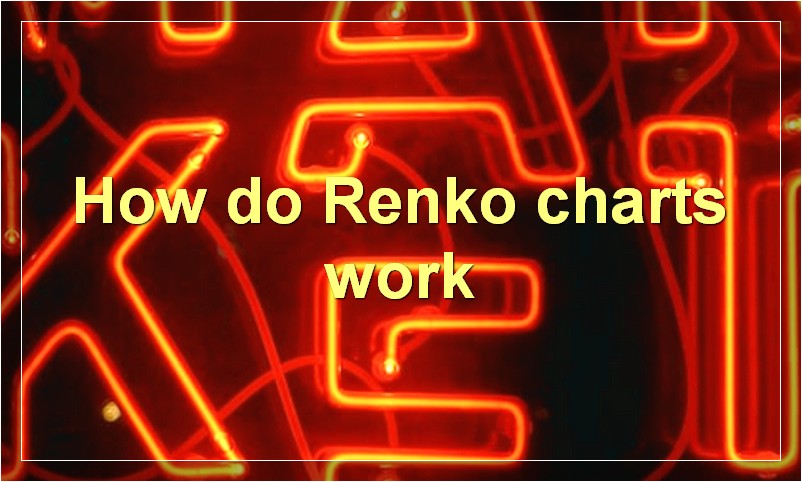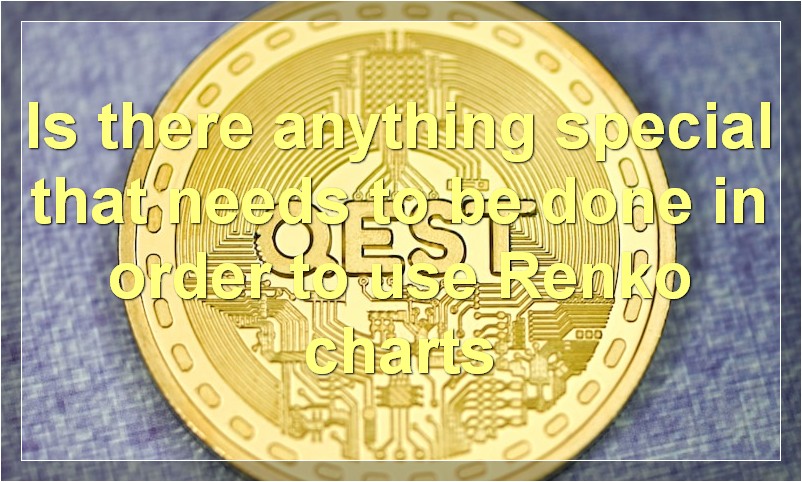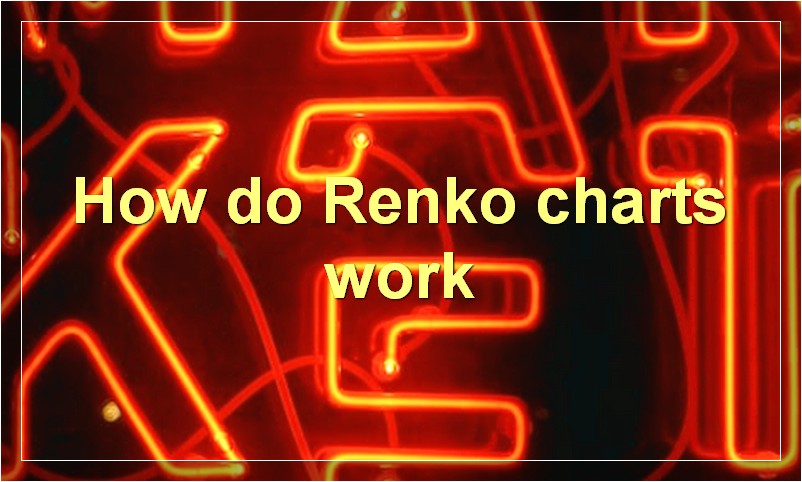If you want to get an edge on the competition, you need to know how to use renko charts.
How do Renko charts work

Renko charts are a type of chart, typically used in technical analysis, that only shows price movement. Price is represented by bricks, or blocks, that are created when the price moves a certain amount. That amount is called the box size. For example, if the box size is set at $0.50 and the price of an asset moves from $10 to $10.50, a brick will be created. If the price then falls back to $10, another brick will not be created until the price moves below $9.50 or above $11. If the price just fluctuates between $10 and $10.50, no new bricks will be created.
Renko charts can be used to identify trends and trend reversals, as well as support and resistance levels. Because new bricks are only created when the price moves a certain amount, Renko charts can filter out some of the noise that can be present in other types of charts, such as candlestick charts.
What are the benefits of using Renko charts
There are a few key benefits to using Renko charts when trading. First, they can help to filter out some of the noise that is often present on other types of charts, making it easier to identify trends. Second, Renko charts can also make it easier to spot potential support and resistance levels. Finally, because Renko charts only move when price moves by a certain amount, they can also help traders to stay disciplined and avoid chasing after small price movements.
How can Renko charts be used to trade forex
Renko charts are a type of chart, typically used in technical analysis, that display price movements in an easy-to-read format. Renko charts can be used to trade forex by identifying potential support and resistance levels, as well as trend reversals.
What are some of the drawbacks of using Renko charts
Renko charts are a type of chart that is created by placing a brick in the next column once the price surpasses the top or bottom of the previous brick by a predetermined amount. The size of the brick is typically equal to the fixed amount, but some traders allow the bricks to be of variable sizes.
The main drawback of Renko charts is that they can lag behind the underlying price action. This is because each brick is only placed once the price has moved by the predetermined amount, so if there is a sudden price move, it may take a few candles for the Renko chart to catch up. This lag can cause traders to miss out on potential profits, or enter into trades too late.
Another drawback of Renko charts is that they can be susceptible to false signals. This is because each brick is placed based on the price action, without taking into account other factors such as volume or orderflow. This means that a sharp price move may occur without any significant underlying buying or selling pressure, which could lead to a false signal.
Overall, Renko charts can be a useful tool for traders, but they should be used with caution due to their potential drawbacks.
Is there anything special that needs to be done in order to use Renko charts

When it comes to charting, there are many different techniques that can be used in order to better visualize data. One such technique is known as Renko charting. Renko charts are a type of chart that uses bricks, or candlesticks, of a uniform size in order to better depict price movements. These charts can be used in any time frame, but they are most commonly used in longer-term time frames. In order to use Renko charts, there are a few things that need to be kept in mind.
First and foremost, Renko charts are best used in conjunction with other technical indicators. This is because Renko charts alone can sometimes give false signals. As such, it is important to use other indicators in order to confirm any signals that may be generated by the Renko chart.
Another thing to keep in mind is that Renko charts can be customized in a number of different ways. For example, the size of the bricks can be changed in order to better fit the trader’s needs. Additionally, the trader may also want to change the colors of the bricks in order to make them more visually appealing.
All in all, Renko charting is a great tool that can be used by traders in order to better visualize price data. However, it is important to keep in mind that these charts should not be used alone. Rather, they should be used in conjunction with other technical indicators in order to confirm any signals that may be generated.
Are Renko charts effective in all time frames
Renko charts are a type of chart that is used to measure price movements. The chart is created by placing bricks, or Renko boxes, in a line when the price moves up by a certain amount. When the price falls by that same amount, another Renko box is placed below the previous one. This creates a step-like appearance on the chart that can be used to identify price trends.
Renko charts are most commonly used on a daily time frame, but they can be effective on any time frame from intraday to monthly. The key is to use the right brick size for the time frame you are trading. For example, a daily Renko chart might use a brick size of $1, while an intraday chart might use a brick size of 10 cents.
The benefit of Renko charts is that they filter out small price movements and make it easy to see the overall trend. This can be helpful in finding trading opportunities that you might otherwise miss.
Do Renko charts work with all types of instruments
Renko charts are a type of chart that is used to measure price movements. The chart is created by placing a brick in the column when the price closes higher than the previous brick, and vice versa when the price closes lower. The size of the brick is typically set at a certain percentage of the instrument’s trading range. Renko charts can be used with any type of instrument, but they are most commonly used with futures contracts and currency pairs.
What is the history behind Renko charts
Renko charts are a type of chart that is created by placing a brick in the next column once the price closes above or below the previous brick by a predetermined amount. The origin of Renko charts is unknown, but they are thought to have been developed in Japan in the early 18th century.
Who created Renko charts and why
Renko charts are a type of chart that is created by taking the closing price of a security and plotting it as a brick. The size of the brick is determined by the price move of the security. If the security moves up by a certain amount, then a new brick is created with a higher price. If the security moves down by a certain amount, then a new brick is created with a lower price.
The creator of Renko charts is unknown, but they are believed to have originated in Japan. The name “Renko” comes from the Japanese word for bricks, “renga”. Renko charts are often used by traders to identify trends and support and resistance levels.

